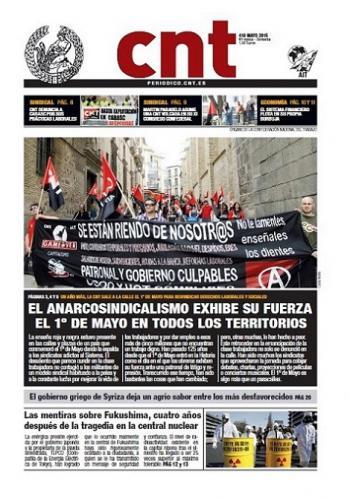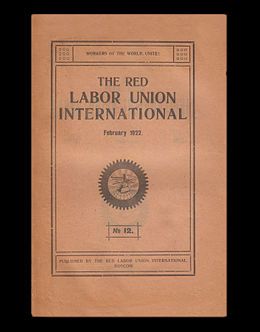by Anarchist Resistance NYC
Today, many radicals are asking themselves how they could be waking up to President Trump. Our question instead is what does this mean for the Left in this country. Paralyzing myths have now been shattered, and this situation could, with a lot of work, passion, and clear thinking, lead to a strategy of action and a far greater positive change than voting for the status quo. The change we are talking about is generational and will have a far greater effect than any string of elections, no matter how repugnant they may be.
Those that see the Greatness of America as being misogynist, nativist, anti-urban, and homogenous in race, sexuality and faith are fighting a rearguard battle against the future which they can not hope to win.
First, this election has dispelled the myth, spread during Occupy, that the primary division in this country exists between the 99% and the 1%. Trump’s victory proves that the conflict is deeper than what amounts to a very simplistic and inaccurate economic calculus: the 99 must surely win against the 1. Many of the so-called 99%ers came out in to support a billionaire, while the other half supported a pro-free trade, Wall Street democrat. Yes, there is absolutely a conflict between the rich and the poor, but that has never been the only division in this country. Those that see the Greatness of America as being misogynist, nativist, anti-urban, and homogeneous in race, sexuality and faith are fighting a rearguard battle against the future which they can not hope to win. This doesn’t mean that they will go away quietly and without inflicting great harm, but that is the nature of dying ideologies.
What is distressing is that this desperate rhetoric has captured the imagination of many who have suffered real humiliation and pain under the neo-liberalism of the one-percent. The tragedy is that the rejection and failure of neo-liberalism has led those “left behind” to eagerly cast their lot with the equally oppressive and failed ideology of paleo-conservativism, with its xenophobia, isolationism and anti-intellectualism. This has created a desperate new political alignment that rejects the very things that can restore its adherents’ respect and livelihood.
From this vantage point, American electoral politics has been nothing more than a zombie horde of defunct worldviews along with oppressive and dangerous ideologies lurching across the blue and red states. No president can overturn the demographic reality that this country will continue to urbanize, will become more and more diverse, and that the mythologized manufacturing jobs of the past will remain dead and buried. These realities are the true wheel of history – the dead will inexorably give way to the living, the past to the future – and no election can change that.
Revolution is not an event that suddenly happens, but something that is carefully prepared, built towards, and eventually implemented by those aligned with the future. All governments, whether they are liberal or conservative, will fight equally hard against threats to the State or the capitalist power structure.
The second shattered myth is that electoral politics is a valid arena for populist leftist change. Whether it is Syriza or Trump, Podemos or Hillary, in the end the Left must confront the oppressive powers of the State and capitalism, none of which can possibly be subverted by superficial electoral games. This is not to say there would be no difference between a Trump administration and a Bernie administration, rather it is to say that the latter would only serve to stall the inevitable confrontation. Electoral politics holds out the promise of slow-moving, incremental socio-political advancement, but real evolution only comes about with a radical change of environment, and this can only be achieved through social revolution.
Revolution is not an event that suddenly happens, but something that is carefully prepared, built towards, and eventually implemented by those aligned with the future. All governments, whether they are liberal or conservative, will fight equally hard against threats to the State or the capitalist power structure. So if we are seeking a confrontation that promises a substantial and irreversible change in society, it doesn’t really matter if it is a liberal or a conservative regime in power. Liberal and conservative governments are both inherently reactionary and resistant to any kind of meaningful change, if only because their very existence is dependent on freezing the present and obscuring all possible futures.
We have seen this play out recently in places like Spain, Greece, the UK, and countless other countries. It is always the same paradigm: the political structure refuses to truly change and will continue an endless cycle of lurching back and forth between liberal and conservative. This brutal and blind impulse towards self-preservation is not only found in rightist regimes. Both right and left-wing regimes have used the implements of totalitarianism – prisons, secret police, fear, war, and economic oppression – to maintain the status quo. To have a future, we must reject all the State’s apparatuses of oppression, and this includes electoral politics with its self-serving divisiveness and false promises of change and hope.
The third myth is that the government has ever been our government. The government is the tool of the State, it is an occupying force now, just as much as it was before. All occupying forces of the twentieth century pair an outward benevolence with a healthy dose of fear and repression. We have always understood this formula, and have been struggling against it. Trump’s victory, nevertheless, heightens the sense of urgency to pull down the mask of benevolence, and we must not squander it. The government has never been our protector, and now those caught up in the trap of “representative democracy” may finally see this as well.
Without these myths, what ways are open to us in the dark days to come? The situation has changed and will continue to change during the next four long years. It won’t be easy, in large part because currently the Left is small and lacks the maturity needed to mitigate many of the on-coming attacks on the future. Attacks on women, LGBTQ, POC, immigrants, political dissidents, and so many others, have been par for the course for too long, and the coming years will be no different. Trump’s victory has only increased the number of bullies and people who are fearful.
We need to pluck up our courage, ready or not, and do what we can to stand up to the bullies. We need not only audacity, but imagination. Our theater of action must move beyond the co-optable symbolic opposition to the lived reality of everyday struggles against oppression. Our actions need to be bold like the Greek anarchists who squatted a hotel to house refugees or the German Leftists who physically shut down and re-purposed a neo-fascist radio station. We need to take up space in Trump’s America and support others to speak, move, and love in their own neighborhoods without fear. We need to continue to expose the systemic brutality against those racially targeted by the police.
While the Trumpists spew their fevered conspiracy theories we will double down on reality. Yes, we will get bashed, we will lose some fights, but there is too much at stake to stay on the sidelines waiting “for next time.” There is no cavalry coming, no courts, no congressional gridlock, no petitions, no media; now it is clear the only recourse is action from the ground up. This is the time when we must ask ourselves: do we really stand with those being bullied even when to do so may cost us our own safety? Is it worth it to stand side by side with the targeted, the scared, and the disheartened, knowing there will be risks? This time we cannot delude ourselves – thanks to Trump these risks are greater but so also are the rewards.
We can cower in the corner, or we can stand up and make new comrades with whom we will grow our resistance. We must become ungovernable to the occupation and unwavering in our support of those that feel targeted. This is how resistance is born and how it achieves victory.
The liberals promised to protect everyone with nothing but a ballot, and now they have been routed and are publicly conceding on all fronts. They are asking us to passively accept whatever injustices Trump has planned for us, for our neighbors, for our friends, for our co-workers, and for those comrades we have not yet met. We have never believed in hiding who we are or being ashamed of our liberatory aspirations.
We know the power of solidarity. We have relied on it for generations and we know it is a stronger, more honest way to protect ourselves and ensure our future. The time has come to stand up for ourselves and what we fight for, to defend the communities that the liberals have abandoned to fend for themselves while cynically asking them to return to the fold in four years’ time. Four years is too long to hide in fear or to look the other way. Let us not be afraid, let us not offer concessions, for we know our work has begun and the future is coming.
Let us not be afraid, let us not offer concessions, for we know our work has begun and the future is coming








































